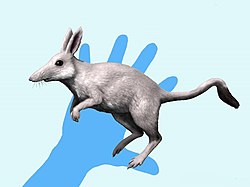| Ameridelphia | |
|---|---|
 | |
| A Virginia opossum | |
| Scientific classification | |
| Kingdom: | Animalia |
| Phylum: | Chordata |
| Class: | Mammalia |
| Infraclass: | Marsupialia |
| Superorder: | Ameridelphia |
| Subgroups | |
Ameridelphia is traditionally a superorder that includes all marsupials living in the Americas except for the monito del monte (Dromiciops). It is now regarded as a paraphyletic group. [1] [2]




